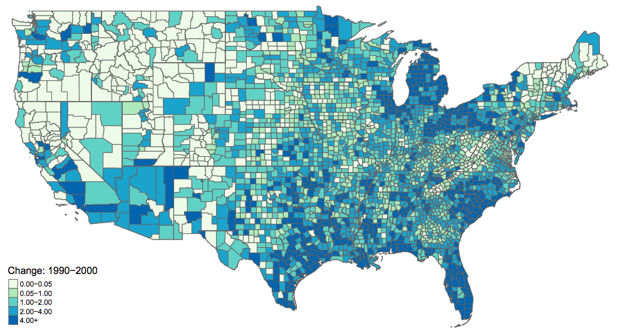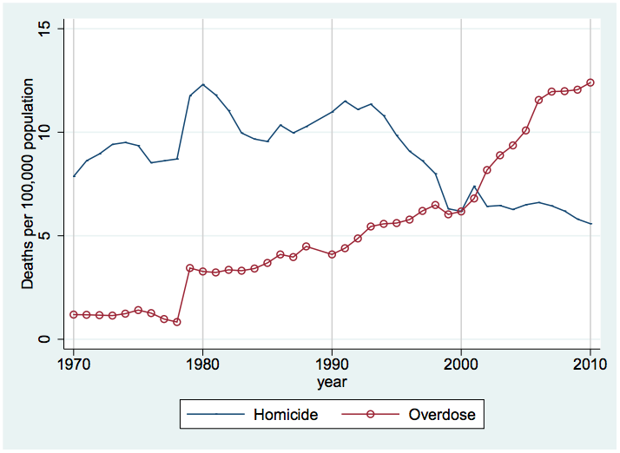Are Drug Deals Via Text the Key to the Murder Decline?

Syda Productions/Shutterstock.com
A new study finds that cell phones played a significant role in reducing homicides in big cities by limiting face-to-face contact.
Many explanations have been offered for the massive drop in violent crime in U.S. cities, ranging from better neighborhood policing, stronger community organizations, or stricter gun control.
Now a new study by economists Lena Edlund and Cecilia Machado suggests another factor at work: the rise in the use of cell phones. The working paper from the National Bureau of Economic Research (NBER) suggests that cell phone popularization in the 1990s helped to reduce the murder rate in urban areas simply by replacing in-person drug deals with phone calls and text messages.
To get at this, the study compares FCC data on the locations of cell phone antenna structures to murder rates across counties from 1970 to 2009. They use the FBI’s Supplementary Homicide Reports to identify those that are gang and drug related.
Change in antenna structures per 1,000 square miles, 1990-2000

During the 1990s, antenna density increased from 15 to 23 antennas per 1,000 square miles, with urban areas seeing as many as 30 antennas. At the same time, homicide rates in urban counties were nearly cut in half, falling from a rate of 17.3 per 100,000 people, to 9.5.
Murder rates dropped the most in counties where cell phone service was expanded the most, the study finds. The effect was concentrated in urban counties—where the concept of “turf” is a phenomenon due to walkability and density—and insignificant in non-urban counties.
The researchers found that expanded cell phone networks had a much stronger effect on gang- or drug-related homicides, compared to other types of homicides, such as spousal, workplace, or due to hunting accidents, where the effect was insignificant. Furthermore, homicides by strangers were the most affected, compared to those by non-strangers.
All in all, the authors estimate that cell phone usage may account for 20 to 30 percent of the homicide decline—accounting for 1,900 to 2,900 of the decline of 10,000 murders—across the decade.
Generally speaking, cell phones reduced such homicides because they limited risky in-person transactions. Before cell phones, drugs traded hands on the street, and disputes over price, quality, or turf could easily result in violence. Cell phones helped reduce such violence, simply by replacing these transactions with calls and texts, enabling negotiation and payment for drugs to be handled at arms’ length. Plus, this reduced the incidence of dealers controlling specific neighborhoods.
“As the turf lost its value, so did the turf war,” the authors write. “A move away from turf-based dealing may have reduced the ability to cartelize drug sales, dented profits, and dulled the allure of gang life.”
Homicide and Overdose Death Rates

The authors point out that their study may help prefigure important, unintended consequences of the legalization of drugs. While cell phones have helped reduce drug-related murders, their expansion has made it all the more easier to purchase drugs. The graph above shows how, as homicides dramatically dropped in the 1990s, overdose deaths climbed even higher. “Thus, cell phones may already have offered a preview of some of the pros and cons of drug legalization,” the authors write.
CityLab editorial fellow Claire Tran contributed research and editorial assistance to this article.
NEXT STORY: Quick Hits


